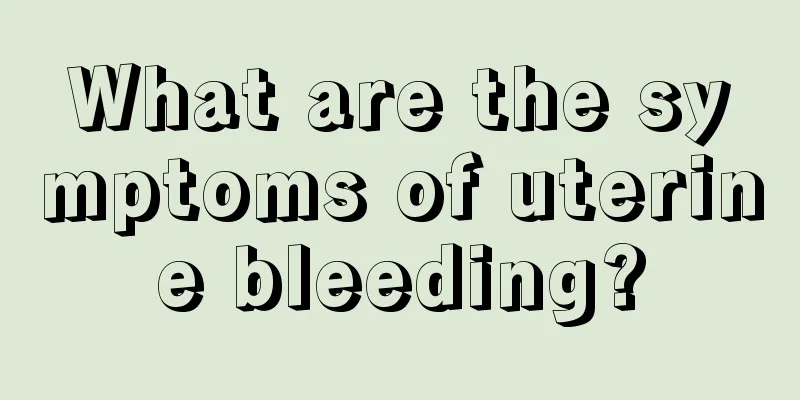What is polycystic ovary?

|
Polycystic ovary is a common problem among women. For women, polycystic ovary is not a good thing because it can cause menstrual disorders, anovulation, obesity and even amenorrhea. Once women have these problems, both their internal health and external complexion will be greatly affected. Next, I will introduce you to some relevant knowledge about polycystic ovary! 1. What is polycystic ovary? The so-called polycystic follicles are polycystic ovary syndrome, which is a phenomenon characterized by menstrual disorders, amenorrhea, anovulation, hirsutism, obesity, infertility and bilateral ovarian enlargement with cystic changes. Patients may have all of the above typical symptoms, or only some of them. However, infertility due to ovulation disorders is the main clinical manifestation of polycystic ovary syndrome. The exact cause of PCOS is unknown. It is currently believed that the ovaries produce too much androgen, and the excessive production of androgen is the result of the synergistic effect of abnormal functions of multiple endocrine systems in the body. 2. Examination of polycystic ovary 1. Hormone determination: determination of gonadotropin, prolactin, insulin, steroid hormones, etc. 2. Ultrasound examination: It is a commonly used method to examine polycystic ovary syndrome. The bilateral ovaries are polycystic and enlarged, with thickened and echogenic capsules. Cystic follicles with a diameter of 2 to 7 mm are seen under the capsule. 3. Laparoscopic examination: including laparoscopy and laparoscope, directly showing that both ovaries are multicystic and enlarged, with thickened and grayish white capsule. 4. Endometrial biopsy: Women undergo endometrial biopsy before or during menstruation, and the test results may indicate anovulatory proliferative endometrium or excessive endometrial hyperplasia. Symptoms of polycystic ovary syndrome Obesity: About half of the patients have this symptom, which is related to excessive androgen, increased proportion of unbound testosterone and long-term stimulation of estrogen. Menstrual disorders: oligomenorrhea, secondary amenorrhea and anovulatory functional uterine bleeding occur after menarche. Bilateral ovarian enlargement: The enlargement of the ovaries can be confirmed by laparoscopic direct visualization of the ovaries or B-ultrasound examination. Hirsutism: Abundant body hair, pubic hair with male distribution, oily skin, and acne are caused by the accumulation of androgens. Infertility: Infertility after marriage is mainly caused by menstrual disorders and anovulation. Acanthosis nigricans: Symmetrical gray-brown pigmentation, such as velvety, flaky hyperkeratotic lesions, appears on the skin of the neck, back, armpits, under the breasts, and groin. |
<<: Does pregnancy cause loss of appetite?
>>: The normal number of female follicles
Recommend
Why does an ectopic pregnancy cause anal swelling?
Ectopic pregnancy may also cause anal swelling, b...
Coughing and diarrhea may be symptoms of food allergies. Do I need to get tested for allergens?
A friend told Huazi that she had diarrhea every t...
Does "putting on weight in autumn" mean "replenishing fat with meat"? Here is a guide to "putting on weight in autumn" in a healthy way
As the saying goes, "After summer, people ar...
Danger! Are you in the high-risk group that lung cancer "favors"? Check out these indicators!
November of each year is "Global Lung Cancer...
How long does it take for the drug to be effective?
Medical abortion is a relatively common method of...
What is the reason for yellowish leucorrhea and fishy smell?
When it comes to leucorrhea, I believe every fema...
Do cherries have the effect of replenishing blood? What does the number of J in cherries mean?
Cherries are a popular fruit in autumn and winter...
It is said that it is difficult and expensive to see a doctor. Why does this phenomenon exist? What can we do about it?
If you go to the hospital, you may have a clear f...
Eating millet can prevent diabetes! ? Japanese Meta-analysis
Millet, also known as "Ji" in ancient t...
What are the symptoms and causes of uterine fibroids?
What women worry about most is suffering from gyn...
How to discharge postpartum uterine congestion
After giving birth, pregnant women are prone to s...
How to stay young after menopause? You will be more beautiful this way!
Menopause means that women enter menopause and th...
What to do if a pregnant woman has bleeding below
Special attention should be paid to the physical ...
Breast nodules pictures
Breast lumps are a breast disease that women are ...
Can I test for pregnancy in 5 days when my period comes?
Under normal circumstances, pregnancy can be dete...









